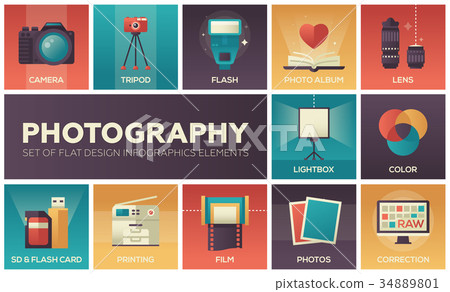Join Us To Discover Essential Photography Pointers That Will Unlock Your Cam'S Possibility-- Prepare To Record Magnificent Photos In No Time At All!
Join Us To Discover Essential Photography Pointers That Will Unlock Your Cam'S Possibility-- Prepare To Record Magnificent Photos In No Time At All!
Blog Article
Content Author-Grant Elmore
When you first pick up your electronic camera, it can really feel frustrating with all the setups and choices readily available. You could find yourself questioning just how to browse aperture, shutter rate, and ISO successfully. Understanding these principles is essential, yet there's more to digital photography than simply technical knowledge. Understanding structure strategies and illumination problems can boost your images considerably. So, what happens if you could find out basic methods to enhance your abilities and begin capturing impressive pictures quicker than you think? Let's check out just how to transform your digital photography trip.
Understanding Electronic Camera Settings
Understanding your video camera setups is vital for catching magnificent pictures. When you pick up your camera, familiarize yourself with the 3 main settings: aperture, shutter speed, and ISO. Each plays an essential function in how your images end up.
Beginning with aperture, which regulates the quantity of light going into the lens. A bigger aperture (reduced f-number) lets in much more light and produces a gorgeous history blur, excellent for pictures. Alternatively, a narrower aperture (greater f-number) maintains more of the scene in emphasis, perfect for landscapes.
Next off, focus on shutter rate. This setup identifies how long your cam's sensor is subjected to light. A fast shutter rate freezes activity, which is wonderful for activity shots, while a slow shutter rate can create magnificent results like smooth water in landscapes.
Last but not least, change your ISO. This setup impacts your video camera's level of sensitivity to light. A greater ISO serves in low-light situations however can introduce sound or grain. Go for the most affordable ISO feasible while still attaining correct direct exposure.
Composition Strategies
When you're out shooting, structure can make all the difference in exactly how your photos reverberate with customers. Beginning by utilizing the guideline of thirds; envision your structure split right into nine equivalent sections with 2 horizontal and two vertical lines. Setting crucial elements along these lines or at their junctions to create balance and rate of interest.
Next off, take into consideration leading lines. These all-natural lines in your scene, like roadways or rivers, draw the visitor's eye right into the photograph, directing them through the story you're informing.
Don't forget framing; usage aspects within your scene, like trees or home windows, to create a structure around your subject, including depth and emphasis.
Likewise, watch on your background. A messy background can distract from your main topic, while a simple one aids it stick out.
Lastly, trying out balance and patterns; they can create a striking picture that records attention.
Mastering Illumination Conditions
Understanding lighting conditions is crucial for catching sensational pictures, as the appropriate light can transform an average scene into something phenomenal.
Begin by observing natural light at different times of the day. Early mornings and late afternoons offer the very best light, known as the gold hour. The soft, cozy tones during these times can enhance your pictures wonderfully.
Do not avoid cloudy days either; diffused light can lessen rough shadows and create a pleasing impact, specifically for portraits.
Trying out backlighting by positioning your topic versus the light. This technique can create a wonderful halo impact and include depth to your photos.
Take go here of your electronic camera setups too. Adjust Where to take photos for copyright card , aperture, and shutter speed to suit the lighting conditions. A greater ISO can aid in low light, however beware of grain.
Utilize a tripod in darker environments to stay clear of blur.
Finally, don't neglect fabricated lights. Flash and continual lights can be excellent devices for controlling light in difficult conditions.
Conclusion
Finally, grasping your camera doesn't need to be overwhelming. By understanding your settings, applying structure strategies, and using the power of natural light, you'll quickly elevate your digital photography skills. Bear in mind, practice makes ideal, so venture out there and experiment with your newly found understanding. With time and commitment, you'll be recording spectacular pictures that show your special point of view. Delight in the trip, and don't forget to enjoy while you're at it!
